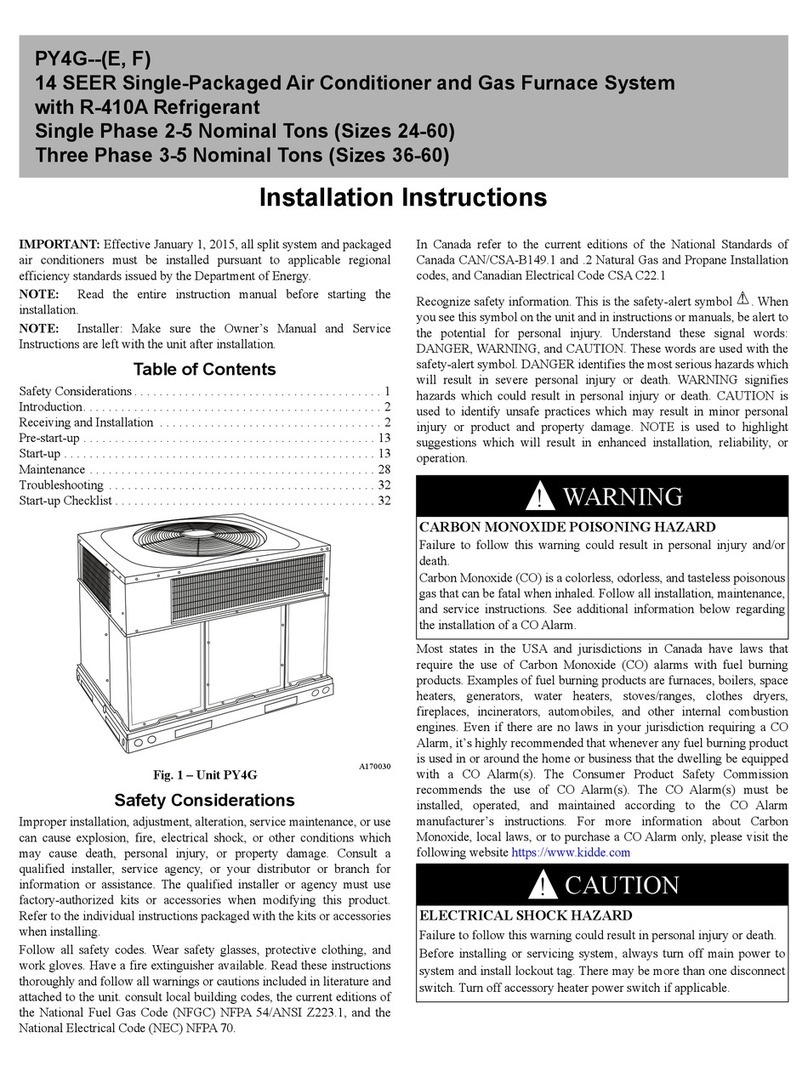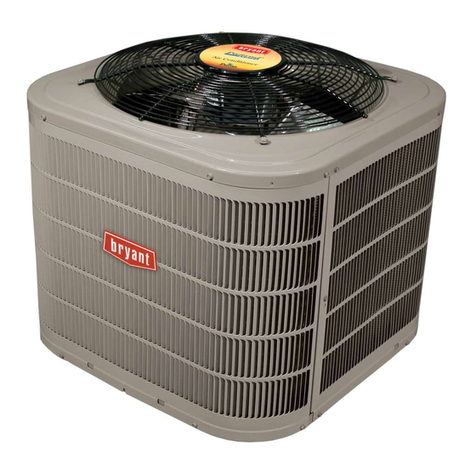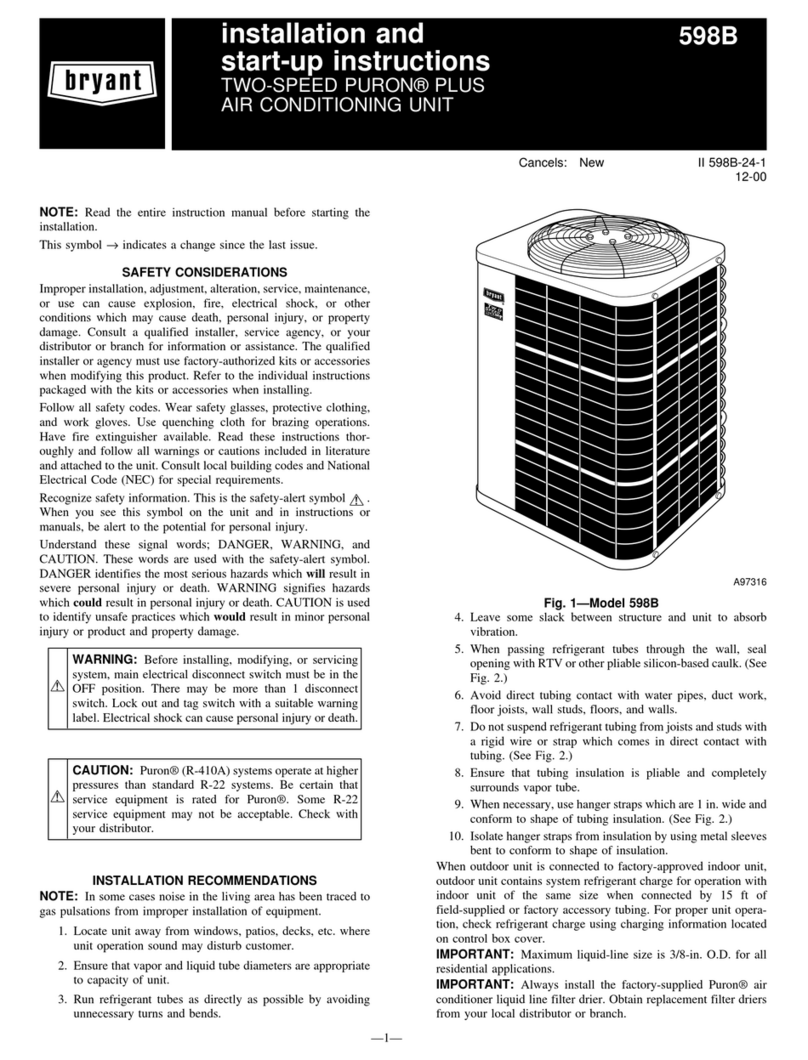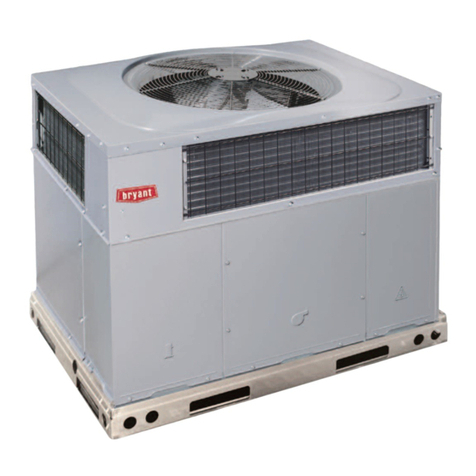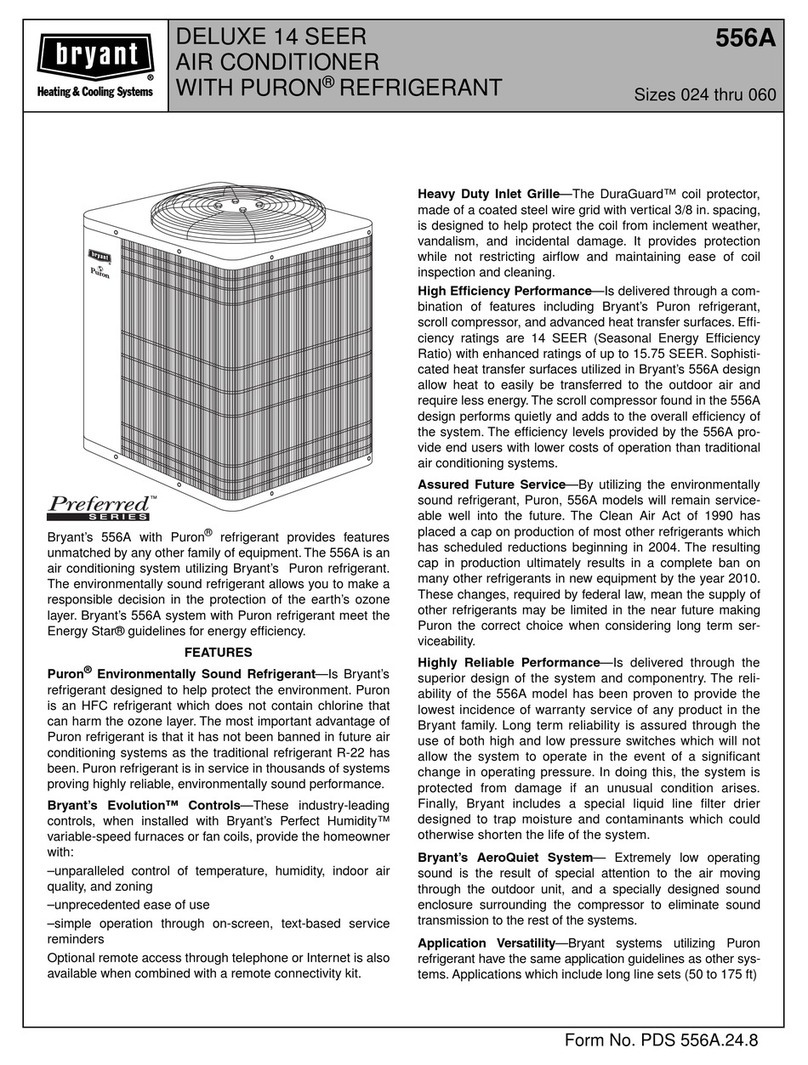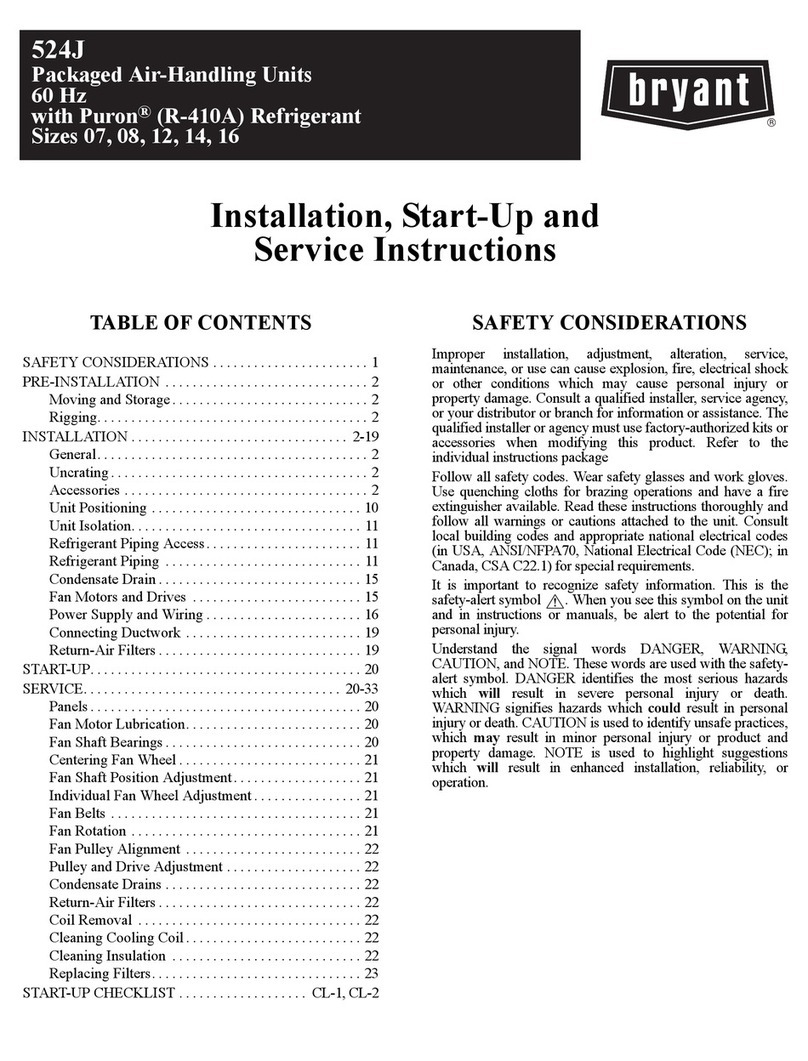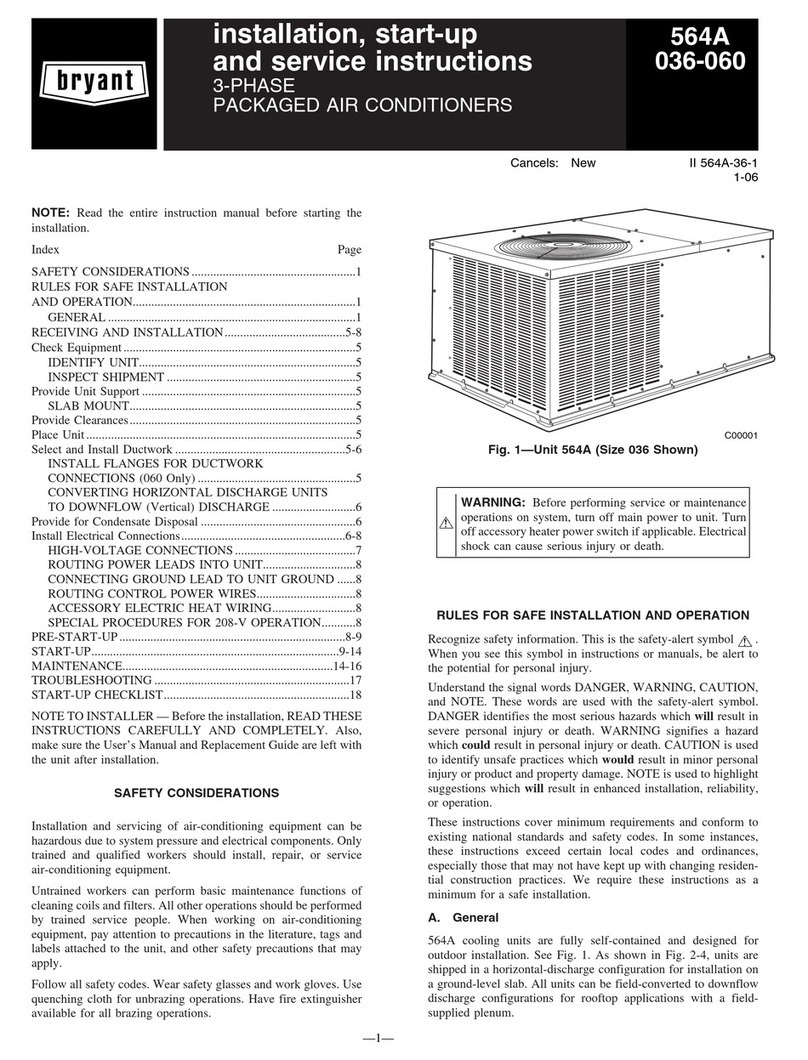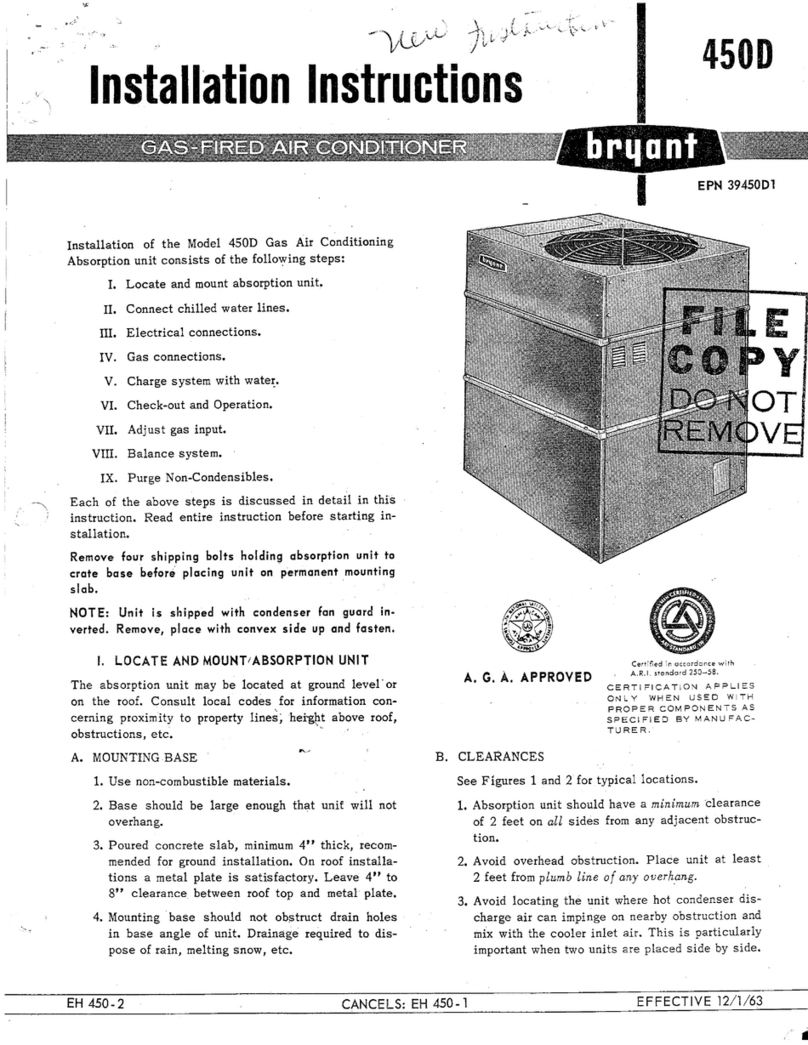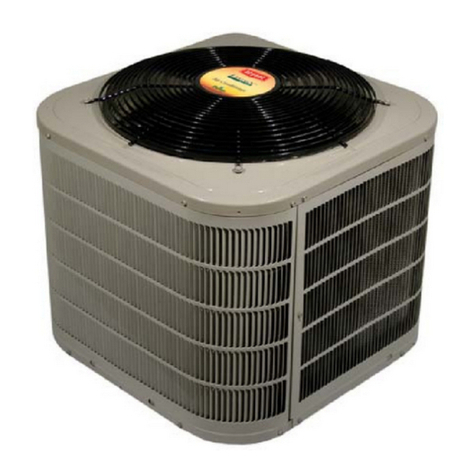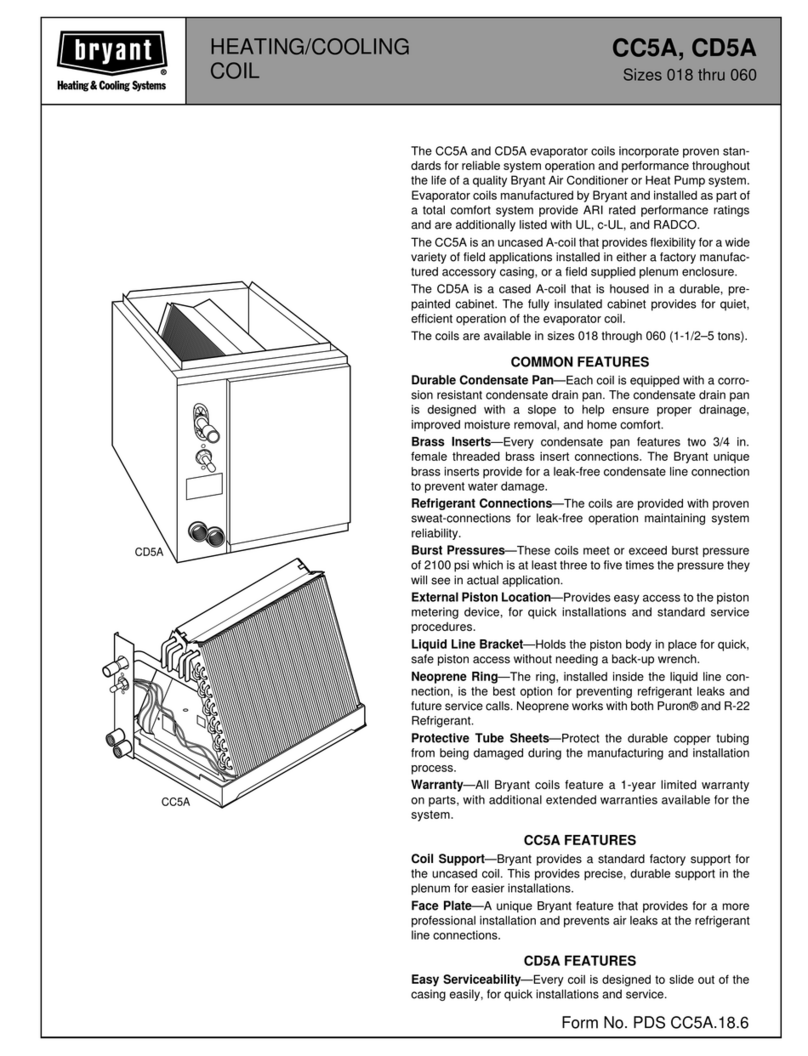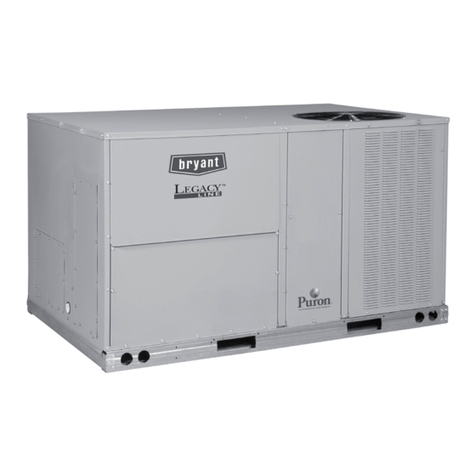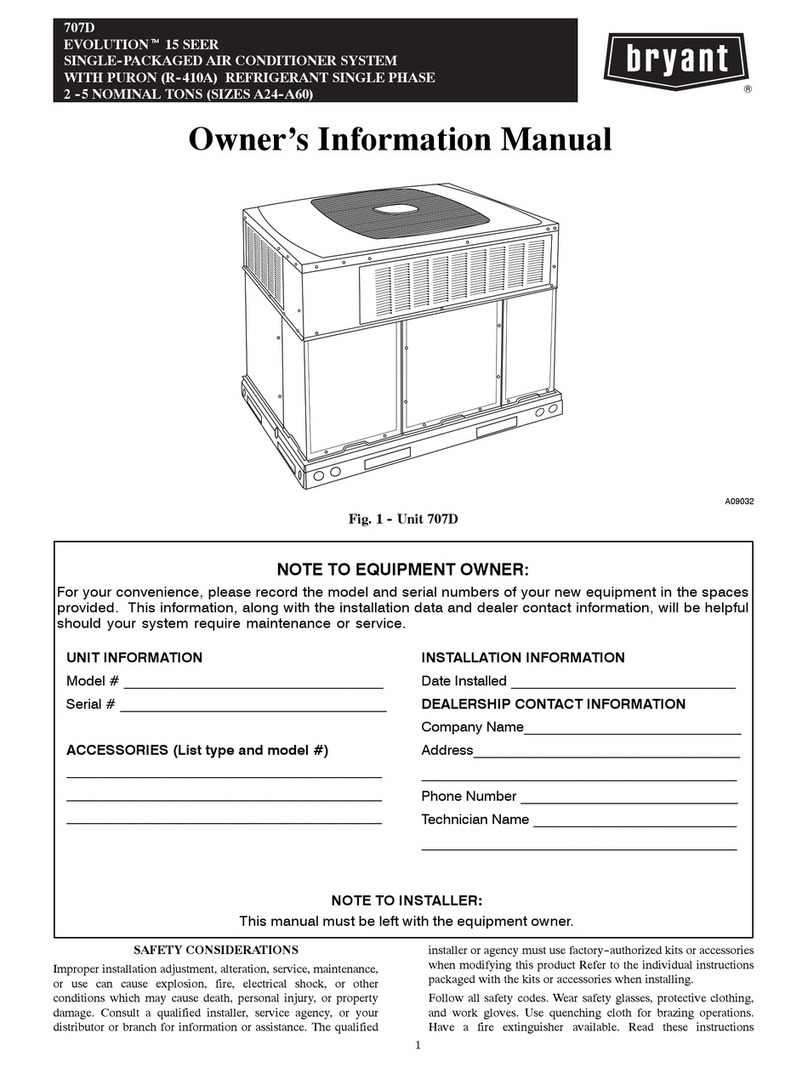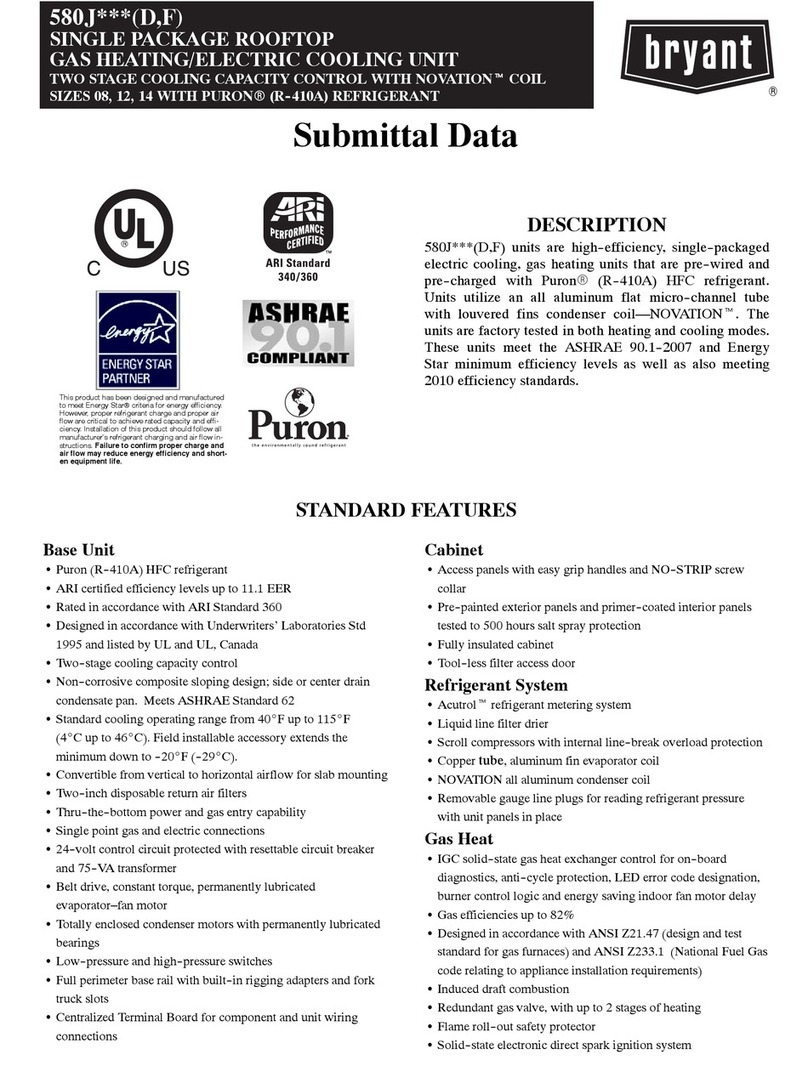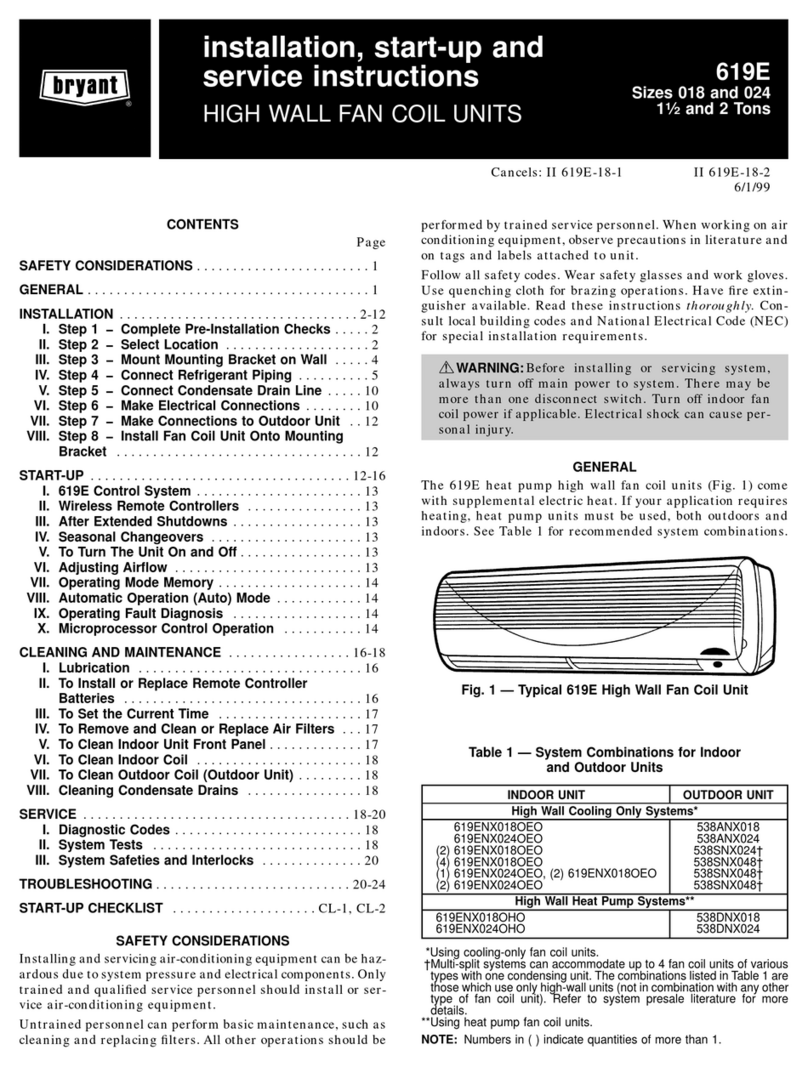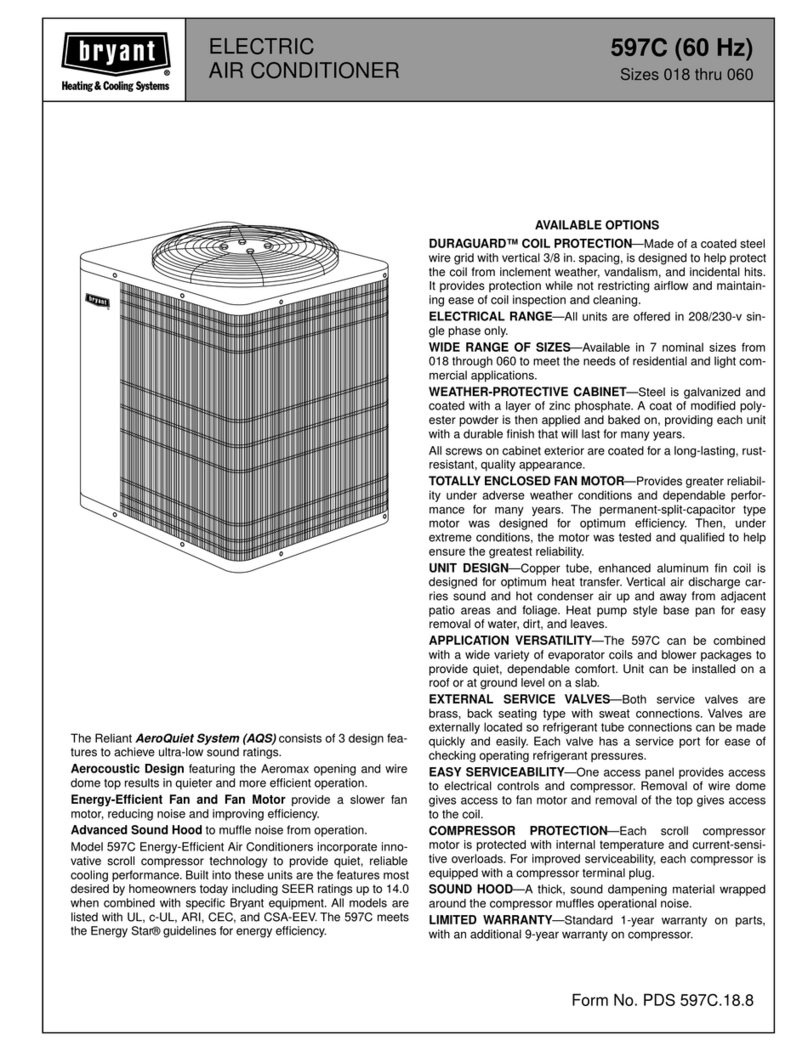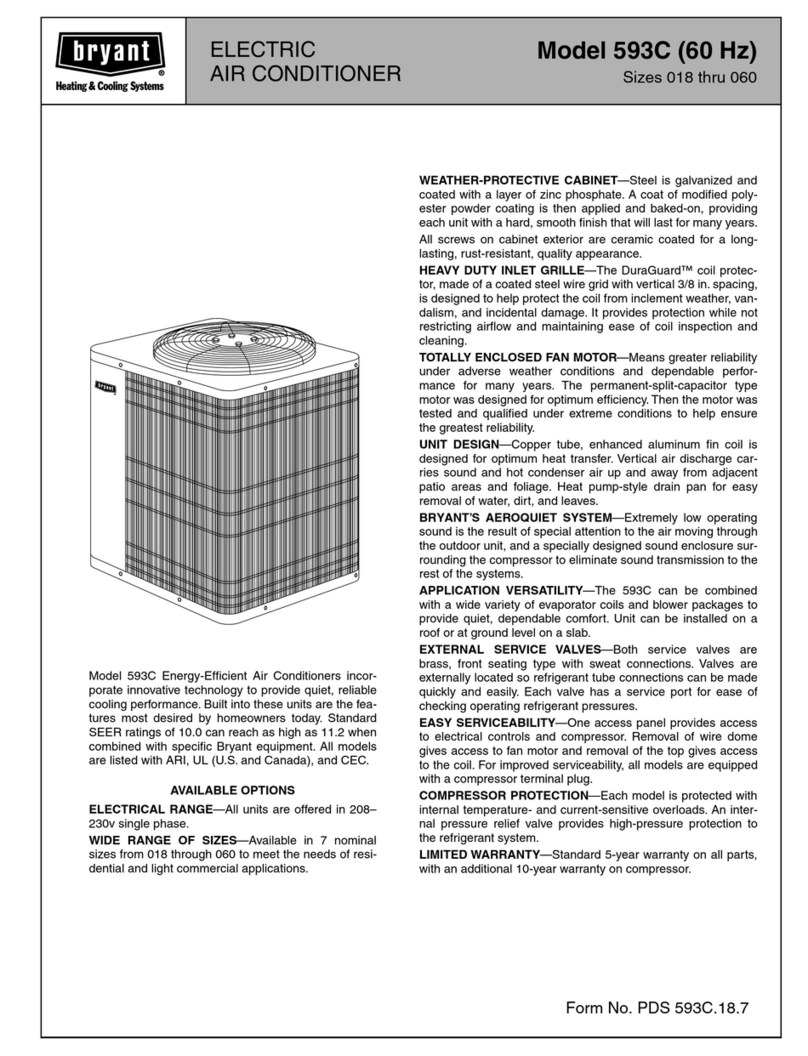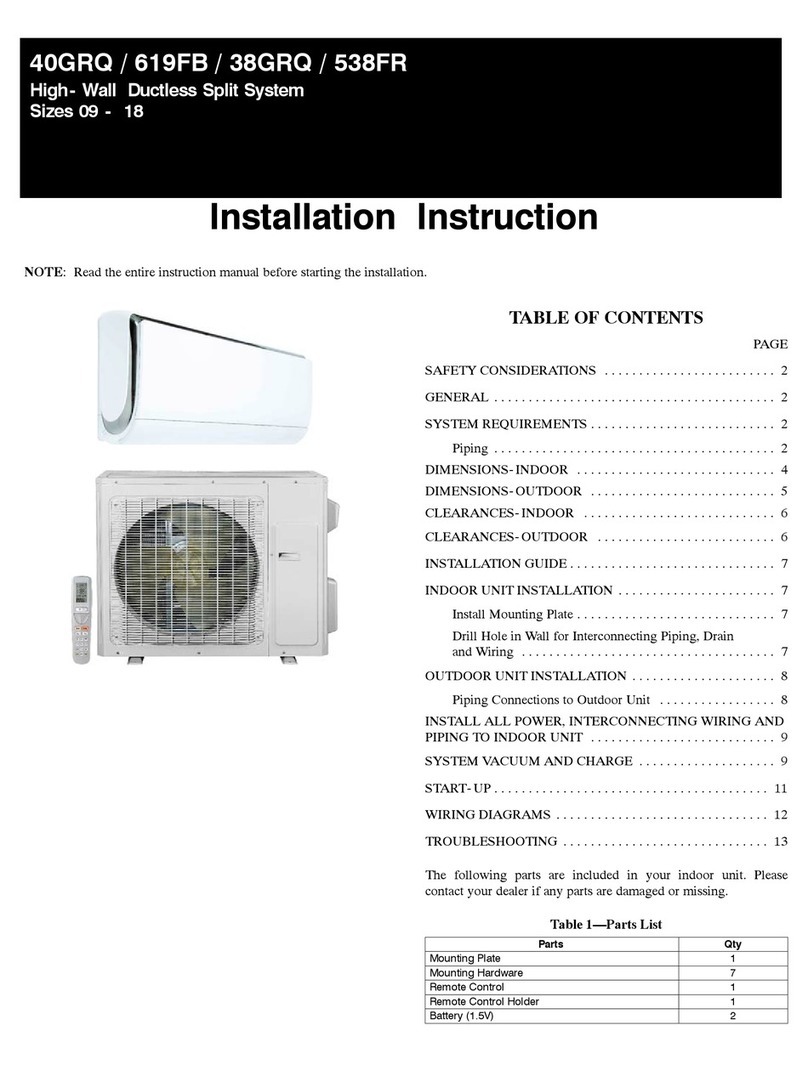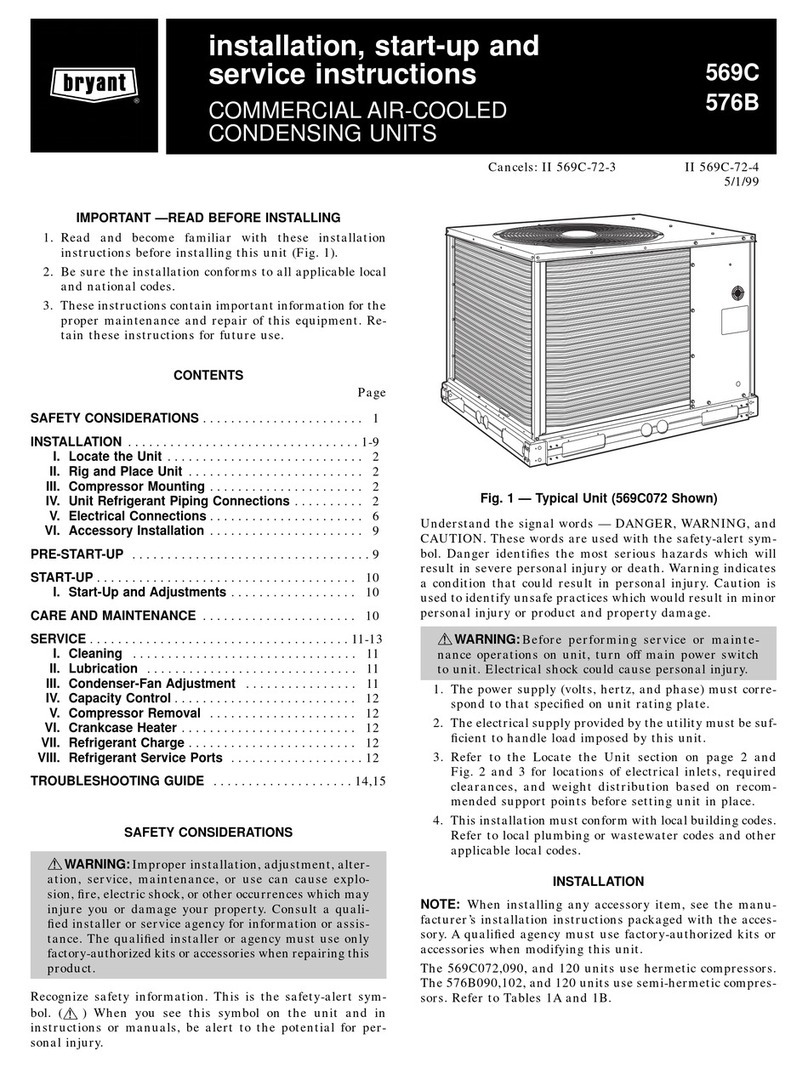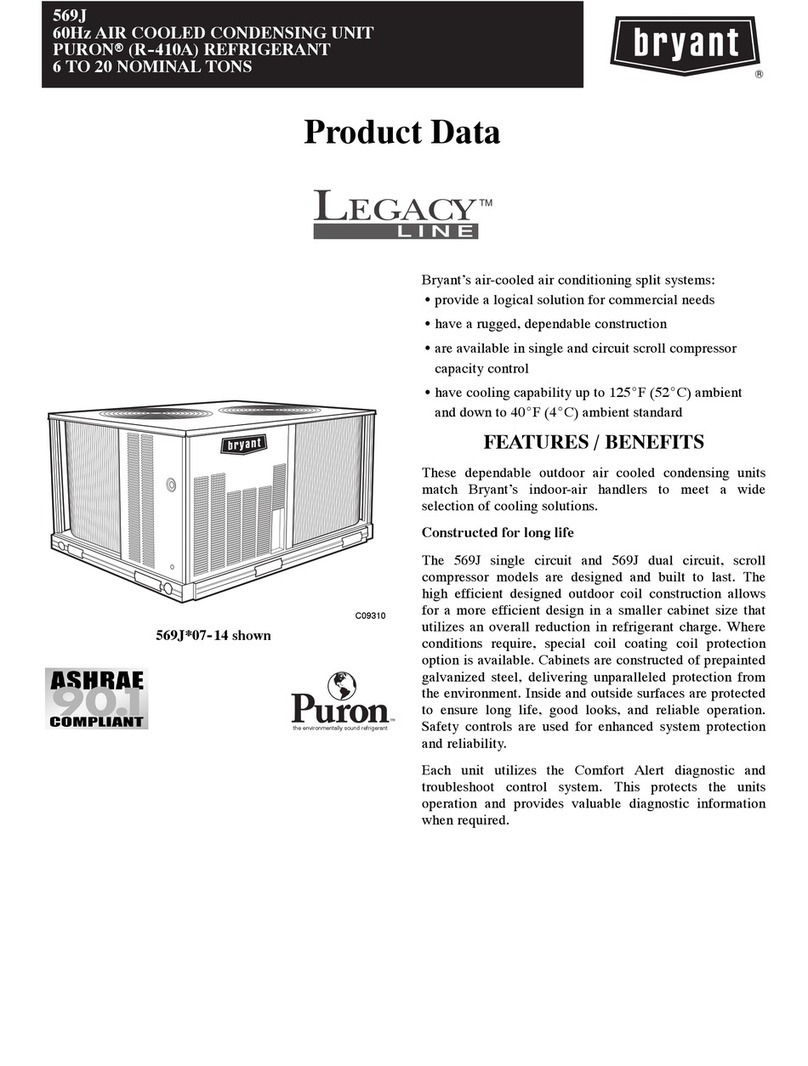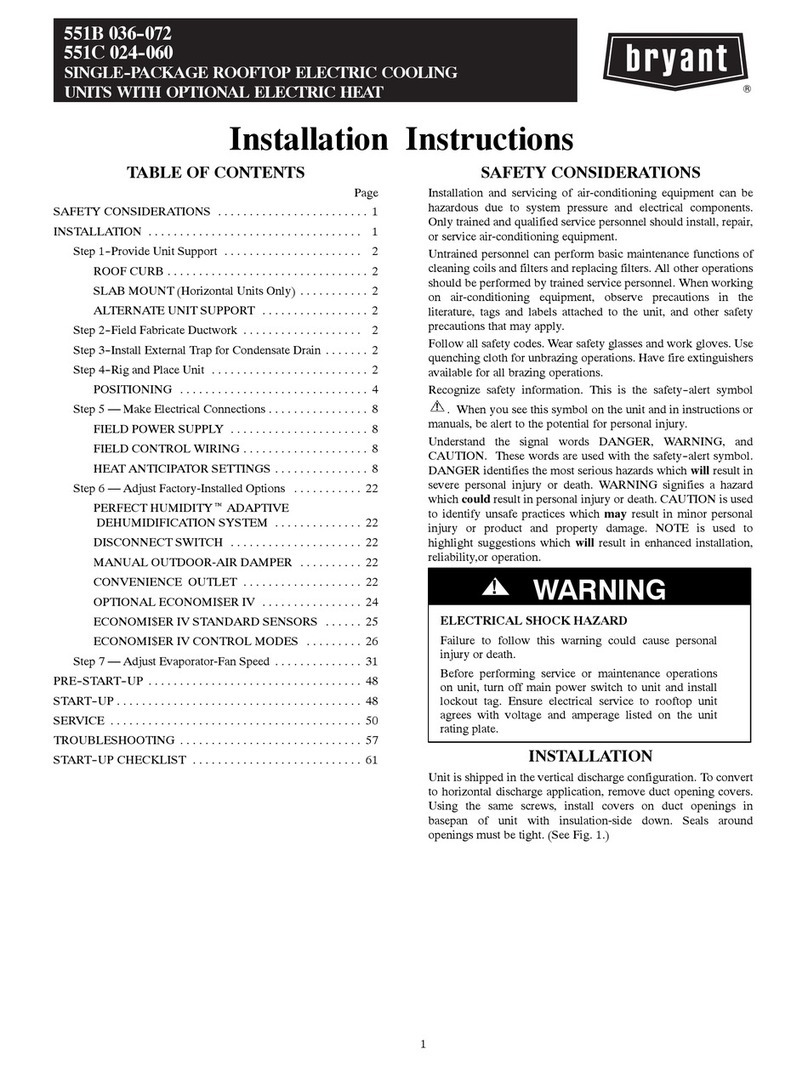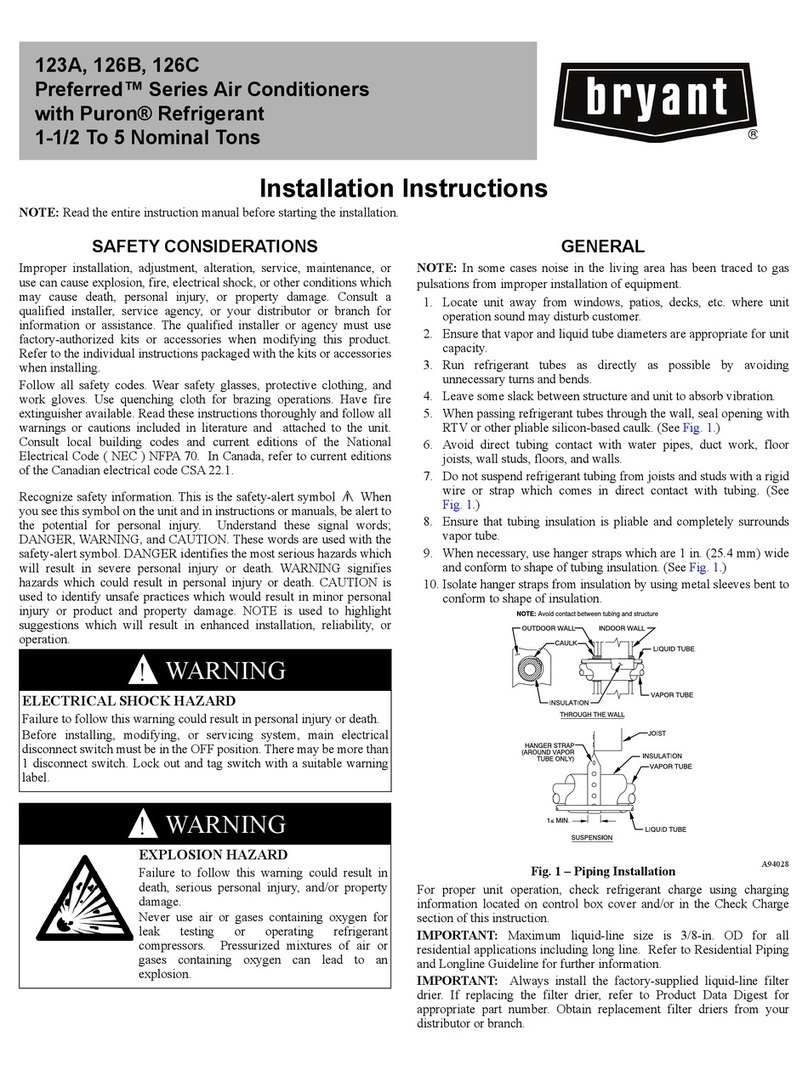
Fig. 2—563C and 563G 060 208/230v, 1 Phase, 60 Hertz A04022
*CH (NOTE #9)
RED or BLK
BLK
208/230 1Ø
POWER
SUPPLY
L1
L2
EQUIP
GND
CONT
11 21
13 23 YEL
OFM
YEL
COMP BLU
BRN
BRN
YEL
S
C
RYEL
YEL
BLU BLU
BRN
*SC
BLK
BLK
*ST
*SR
12
5
CAP
*LPS*DTS
*HPS
BLK BLK YEL
BLU
VIO
H
C
F
CONNECTION DIAGRAM
+t˚
BLU
BLK
BLU YEL
*CTD
BRN
(NOTE #14)
BLU
BLU BLK
*LLS
BLK
Y RG
INDOOR THERMOSTAT (NOTE #5) INDOOR BLOWER MOTOR
EXTERNAL POWER
SUPPLY 24V
(NOTES #3 & #6)
(NOTE #8)
SCHEMATIC DIAGRAM
(LADDER FORM)
11 21
CONT
L1
EQUIP
GND
*SR
*SC
52
1H
C
F
*ST
OFM
+t˚
CONT
23 13
CAP
S
CRCOMP
L2
*LPS
*DTS
*HPS
CONT
IFR
EXTERNAL POWER SUPPLY 24 V
*CTD
(NOTE #14)
Y
G
R
INDOOR THERMOSTAT
RC
*CH
1. Symbols are electrical representation only.
2. Compressor and fan motor furnished with inherent thermal protection.
3. To be wired in accordance with National Electric N.E.C. and local codes.
4. N.E.C. class 2, 24 V circuit, min. 40 VA required, 60 VA on units
installed with LLS.
5. Use copper conductors only.
6. Connection for typical cooling only thermostat, for other arrangements,
see installation instructions.
7. If indoor section has a transformer with a grounded secondary, connect
the grounded side to the BRN lead.
8. When start relay and start capacitor are installed, start thermistor is not
used.
9. CH not used on all units.
10.If any of the original wire, as supplied, must be replaced, use the same
or equivalent wire.
11.Check all electrical connections inside control box for tightness.
12.Do not attempt to operate unit until service valves have been opened.
13.Do not rapid cycle compressor. Compressor must be off 3 minutes to
allow pressures to equalize between high and low side before starting.
14.Wire not present if HPS, LPS, DTS or CTD are used.
15.Use conductors suitable for at least 75˚C (167˚F).
EVAPORATOR ENTERING AIR ˚F WB.
TEMP ˚F
OUTDOOR
50
TABLE I-SUPERHEAT CHARGING TABLE
(SUPERHEAT ˚F AT LOW-SIDE SERVICE PORT)
52 54 56 58 60 62 64 66 68 70 72 74 76
55 9 12141720232629323537404245
60 7 10121518212427303335384043
65 -- 6 101316192124273033363841
70 -- -- 7 1013161921242730333639
75 -- -- -- 6 9 12 15 18 21 24 28 31 34 37
80 -- -- -- -- 5 8 12 15 18 21 25 28 31 35
85 -- -- -- -- -- -- 8 11 15 19 22 30 3326
90 -- -- -- -- -- --
--------------
-- -- -- -- -- -- --
--
--
--
--
--
----
--
----
--
----
--
------
--
-- --
--
5 9 13 16 20 24 27 31
95 6 101418222529
100 8 1215202327
5 9 13 17 22 26
6 11152025
8 141823
--
--
-- --
-- -- --
105
110
115
324474-101 REV. C
1. Operate unit a minimum of 10 minutes before checking charge.
2. Measure suction pressure by attaching a gage to suction valve service port.
3. Measure suction temperature by attaching an accurate thermistor type or electronic
thermometer to the suction line at service valve.
4. Measure outdoor air dry-bulb temperature with a thermometer.
5. Measure indoor air (entering indoor coil) wet-bulb temperature with a sling
psychrometer.
6. Refer to table I. Find outdoor temperature and evaporator entering air wet-bulb
temperature, at this intersection note the superheat.
7. Refer to table II. Find superheat temperature located in step 6 and suction
pressure, at this intersection note suction line temperature.
8. If unit has a higher suction line temperature than charted temperature, add
refrigerant until charted temperature is reached.
9. If unit has a lower suction line temperature than charted temperature, remove and
recover refrigerant until charted temperature is reached.
10. If outdoor air temperature or pressure at suction valve changes, charge to new
suction line temperature indicated on chart.
11. This procedure is valid when indoor air flow is within ±21% of its rated CFM.
1. Compressor damage may occur if system is over charged.
2. This unit is factory charged with R-22 in accordance with the amount shown on the rating plate. The
charge is adequate for most systems using matched coils and tubing not over 15 feet long. The
best performance will be achieved when the unit operates with a suction gas superheat at the
compressor inlet of 5 ˚F at normal rating conditions of the air conditioning and refrigeration institute
(ARI). This chart may be used to approximate the charge if ARI rating conditions cannot be obtained.
ARI rating conditions are equivalent to DOE test "A" conditions. See product data literature for required
indoor air flow rates and for use of line lengths over 15 Ft.
3. Relieve pressure and recover all refrigerant before system repair or final unit disposal. Use all service
ports and open all flow-control devices, including solenoid valves.
91898785838179777540
89878583817977757338
87858381797775737136
85838179777573716934
83817977757371696732
81797775737169676530
79777573716967656328
77757371696765636126
75737169676563615924
73716967656361595722
71696765636159575520
69676563615957555318
67656361595755535116
65636159575553514914
63615957555351494712
61595755535149474510
5957555351494745438
5755535149474543416
5553514947454341394
5351494745434139372
5149474543413937350
85.782.479.276.073.070.067.164.2
SUCTION PRESSURE AT SERVICE PORT PSIG.
TEMP. ˚F
61.5
SUPERHEAT
(MEASURED AT LOW-SIDE SERVICE PORT)
TABLE II-REQUIRED SUCTION TUBE TEMPERATURE ˚F
LOGIC
T1 T3
T2
IFR
C
R
*LLS
LOGIC
T1 T3
T2
*CHS
RED or BLK
*CHS
FACTORY POWER WIRING
FACTORY CONTROL WIRING
FIELD CONTROL WIRING
FIELD POWER WIRING
COMPONENT CONNECTION
FIELD SPLICE
JUNCTION
CONT CONTACTOR
CAP CAPACITOR (DUAL RUN)
*CH CRANKCASE HEATER
*CHS CRANKCASE HEATER SWITCH
COMP COMPRESSOR
*CTD COMPRESSOR TIME DELAY
*DTS DISCHARGE TEMP. SWITCH
*HPS HIGH PRESSURE SWITCH
IFR INDOOR FAN RELAY
*LLS LIQ. LINE SOLENOID VALVE
*LPS LOW PRESSURE SWITCH
OFM OUTDOOR FAN MOTOR
*SC START CAPACITOR
*SR START RELAY
*ST START THERMISTOR
* MAY BE FACTORY OR FIELD
INSTALLED.
NOTES:
-LEGEND-
CAU
TIO
N
BLK
© 2004 Bryant Heating & Cooling Systems 7310 W. Morris St. Indianapolis, IN 46231 —2— Printed in U.S.A. 563c182 Catalog No. 5356-305
